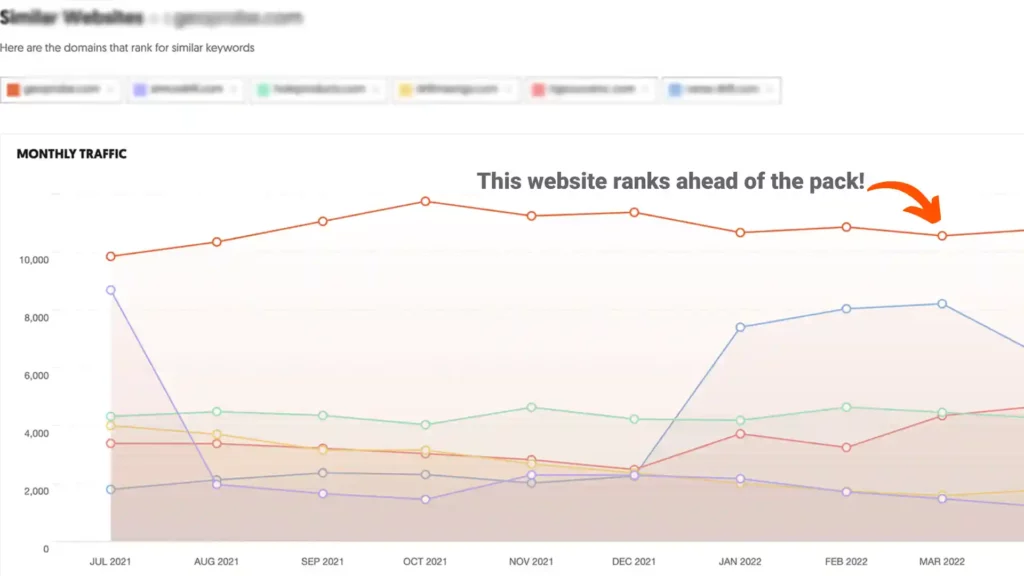Marketing in the manufacturing industry has changed more in 2 years than in the past 50 years.
Marketing in manufacturing is similar to many industries, and 57 percent is the number they watch. The figure may be higher or lower for some manufacturing consultants, system integrators, and VAR.
Like an assembly line, we can gate each phase of the sales pipeline. If my first process is not working right, I don’t want to pass it on to the second step. Right?
Not until I fix the first step.
57% – that’s how far the average manufacturing buyer is through the decision process before engaging system integrators, VARs, and consultants.
This is an alarming statistic. About 60% of your buyers are already in your buying cycle before you even know about it. But it’s especially distressing if you are in the manufacturing industry.
Media clutter is often a major bottleneck for brands at the awareness stage, particularly new entries. The insufficient intensity or creative appeal of marketing strategy in manufacturing companies and communication can also limit awareness growth.
Is your website generating enough leads for the sales team?
This might include a lack of distinctive or relevance to the target audience and drive-by gaps in real or perceived brand positioning.
You want to be in front of RFIs and RFPs before they are written. Before they are even a twinkle in their eye.
I used to sell cutting-edge digital security solutions to the public sector, the FBI, airports, and public transportation. This was back when everything was recorded on analog VHS video.
I was always frustrated that the sales cycle was often over 2-3 years. But, by laying the groundwork and adding our specifications to their requirements, we would typically have huge payoffs for my company and the customer.
My specs were often included in the request for proposal (RFP) well before the competition even reviewed it.
I didn’t want to trick customers into buying something they didn’t need. It was that I spent time talking with them, understanding the problem, and developing a solution to solve their problem economically. It all paid off, and I am talking about it here.
Intelligent Vertical Automation in Healthcare Marketing
Orchestra AI platform utilizes a compound AI agent architecture, functioning as an AI Agentic Platform for the healthcare industry. This architecture seamlessly integrates multiple specialized AI agents into a cohesive system, enabling it to tackle complex, multifaceted marketing tasks.

Useful Marketing Trends for Manufacturing Companies
1. Personalization
Personalization is the key to success for any manufacturing company looking to stand out.
Using data analytics to create unique and individualized customer experiences can help you build lasting relationships with your customers and keep them returning for more. To get more leads, follow writing formats like BAB, AIDA, and PAS.
Look in your inbox right now. How many are to no one? Or I got on yesterday. Dear {first_name}, how are you doing?
My reply was, “Not very well right now.”
My reply was, “Who is {first_name}.”
Google Ads Checklist – Download Now! 🚀
Struggling to get the most out of your Google Ads? 🔥 Download our Google Ads Optimization Checklist and take your campaigns to the next level!
✅ Maximize Clicks & Conversions
✅ Lower Your Cost-Per-Click (CPC)
✅ Improve Ad Quality Scores
✅ Target the Right Audience
This free checklist will help you set up, optimize, and scale your Google Ads campaigns for maximum ROI.
2. Marketing Automation
Hubspot Marketing Automation is a powerful tool that allows manufacturers to deliver highly personalized and targeted customer messages.
For example, in manufacturing, you can set up processes with metrics and improve them. I love what I see with augmented finOPS here.
It allows for automating key marketing processes, such as segmenting customers based on their engagement levels, creating tailored campaigns, tracking performance, and more. With Hubspot Marketing Automation, you can optimize your efforts to reach potential customers at the right time with the right message.
This marketing automation tool allows manufacturers to simplify operations and measure success more effectively. The platform’s easy-to-use interface makes it easy for marketers to create detailed campaigns quickly and efficiently. Furthermore, by implementing automated workflows and email sequences, manufacturers can easily identify and engage high-value prospects on time.
Manufacturers can also use Hubspot’s analytics capabilities to track key marketing metrics such as open rates, click-through rates, conversion rates, cost per lead, and sales. This data provides valuable insights into customer behavior, which helps inform better decisions regarding personalizing content or improving overall customer experience.
Furthermore, by leveraging Hubspot’s integrated CRM system, marketers will have access to all their contacts’ data stored in one central place, making it easier to manage customer relationships and track progress over time.
This comprehensive view of each customer allows for more effective segmentation strategies, allowing customized offers to be sent out according to customer preferences or interests.
In short, leveraging Hubspot Marketing Automation is a great way for manufacturing companies to automate their processes and be able to analyze data about their customers to make more informed decisions about how best to market products or services.
This helps improve the customer experience while allowing companies to save time spent on manual tasks like managing individual campaigns or contacts across multiple channels.
Content marketing and marketing in manufacturing
Content marketing is a powerful tool that manufacturing companies can use to drive more leads and boost their sales. Content marketing involves creating valuable and informative content that resonates with the target audience and provides value beyond simply advertising a product or service.
It involves carefully crafting content through blog posts, articles, infographics, videos, and other digital media to engage potential customers with relevant topics.
Content marketing aims to create trust and familiarity between the company and its customers.
By providing quality information useful to potential customers, manufacturers can establish themselves as the authoritative source on the subject matter. This builds relationships that can lead to future sales. It also helps manufacturers differentiate themselves from competitors by showcasing their expertise and knowledge about their process industry.
When creating content for marketing purposes, manufacturers must consider their target audience. The content should solve problems or answer potential customers’ questions about the products or services offered.
This builds trust between the manufacturer and its customer base by demonstrating a genuine interest in understanding their needs and wants. It also assures them that they are making an informed decision when choosing the manufacturer’s products or services over competitors.
Manufacturing companies can get started with content marketing by creating a blog on their website to post articles related to their industry or even share success stories from past customers who have found success using their products or services.
Companies can also distribute this content on social media platforms like Facebook, Twitter, Instagram, and LinkedIn while interacting with followers in real time.
Additionally, hosting webinars or creating tutorial videos (hands-on content) are great ways for manufacturers to demonstrate how their products work in action – giving potential customers additional insight into what makes them stand out from other products on the market.
Content marketing is one of the most efficient methods for helping manufacturing companies increase sales while raising brand awareness within their target audiences.
Manufacturers can create lasting relationships with consumers by crafting high-quality materials tailored specifically to potential buyers’ needs and interests. This could potentially lead them to become paying customers in the future!
Maximize Conversions Fast with Our PPC Campaign Launch!
Turn Clicks into Customers with a Rapid-Deployment Pay-Per-Click Strategy
What are you doing about it?
Research from CEB’s Marketing Leadership Council shows that potential business customers increasingly use digital channels to form opinions about major purchases.
Today’s business buyers do not contact suppliers directly until 57 percent of the purchase process is complete. The challenge for marketers is to be present in the right channels, with the right content, at the right time to educate buyers and help guide their commercial decisions.
What it means for the manufacturing ecosystem
CEB and Google explored this problem to learn what leading companies and their marketing teams do differently to thrive in a world where customers learn independently. The marketing strategy in a manufacturing company is vital.
Let’s break this down into three segments:
- Digital Integration
- Content Marketing
- Analytics
Digital Integration and marketing in manufacturing
“Integrating marketing communications is hard—and that’s not a new concept,” — Shelley West, Principal Executive Advisor at CEB, @CEB_News.
The report states that you can’t process your way out of marketing in manufacturing companies because of structural problems. Your sales and marketing silos might be holding you back. Focusing on process changes won’t fix it.
They have distinct challenges and very different solutions. Message and channel integration is critical for customers to hear your message through the clutter. But there are two kinds of integration. “Campaign Integration” and “Digital Integration.”
However, there are two types of integration:
- Campaign Integration
- Digital Integration
They have distinct challenges and very different solutions.
Content Marketing for Manufacturing Firms
“Content marketing has a dirty little secret,” by Brent Adamson (@brentadamson), Principal Executive Advisor at CEB.
If you want to be found by your target customers in the noisy digital environment, you must meet consumer demands.
The system integrators, VARs, and consultants can provide valuable, highly relevant content with context. It’s the price of admission.
Even though you may have the greatest content, it may not be successful. Context is about how you have already engaged with your relevant prospect, your relationship, and what devices they use to have a more intelligent conversation.
Many marketing teams are settling for a fractured, over-engineered approach to content creation. The result? Mediocre content only adds to the noise and doesn’t stand a chance of breaking through.
Marketing Analytics for marketing in manufacturing

“The missing ingredient? Savvy analytics talent with a nose for how marketing contributes to economic value creation,” by Pat Spenner, Strategic Initiatives Leader at CEB
A story of humans over technology and big data. The quest for perfectly integrated data and the next best thing in analytic tools is endless.
In their quest, most B2B marketing teams overlook simpler, useful analytics that can be utilized with existing tools. Have you looked at your Google Analytics account recently?
The missing ingredient? Savvy analytics people with a nose for how marketing contributes to economic value creation.
Conclusion about marketing in manufacturing
Before jumping on the 57 percent bandwagon, know what you are doing.
When do your manufacturing prospects want educational material like blog posts or white papers, and when do they want to see videos? Matching your customers’ needs with the right content and marketing channel is the biggest challenge in digital marketing.
To do this right, you need data on what content your customers consume and through what channels.
System integrators, VARs, and Microsoft consultants are often not set up for those things. Typically, they’ve responded to digital with a fragmented approach: one team owns content creation for one product line, another owns webinars for another product, a third owns video for the entire firm, and so on.
How do you solve the problem? Rather than investing the time and money to implement uncertain marketing models that attribute specific leads to specific pieces of content, Marketing should focus on two things: simpler, more actionable models and analytics talent.
Suppose you can get digital integrated with your broader mix, get the message right, and pick the right format for those messages. In that case, you’ll be well on your way to generating leads in the manufacturing digital landscape.
Share your comments below and share this with a friend!
We’re listening about marketing in manufacturing.
Have something to say about your experience with marketing in manufacturing?
Struggling to Keep Up with Content Demands?
In today’s digital landscape, creating consistent, high-quality content is more challenging—and more important—than ever. Without a clear plan and the right tools, your brand risks falling behind in the crowded marketplace.
General FAQ’s marketing strategy in a manufacturing company
How do you market a manufacturing company?

Top 5 Strategies For Industrial B2B Marketing
1. Marketing research and competitive analysis
2. Establish a communication architecture and clear, unique value proposition
3. SEO-friendly website tuned with call-to-actions
4. Paid search can help boost your web traffic quickly
5. Content marketing is critical
BONUS: Use marketing technology to scale and reduce costs.
What has changed in the manufacturing industry and marketing?

Marketing in manufacturing has changed more in two years than in the past 50 years. Leading manufacturing firms are undergoing a digital transformation and using modern digital marketing strategies.
What does it mean for the manufacturing ecosystem?

The manufacturing ecosystem included many players and stakeholders, such as tier 1, 2, and 3 suppliers, system integrators, consultants, and others.

